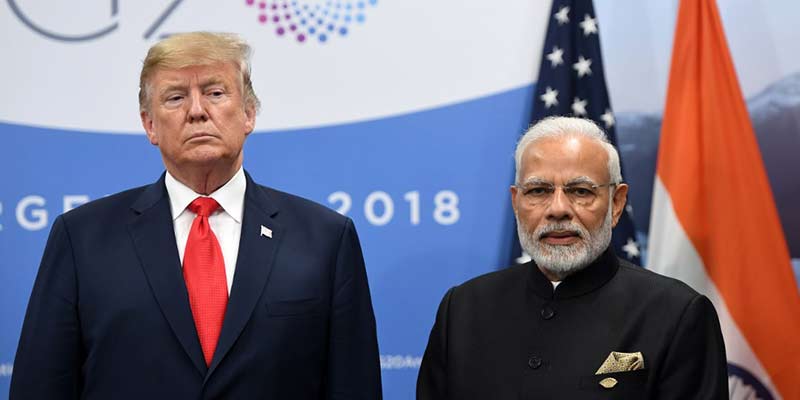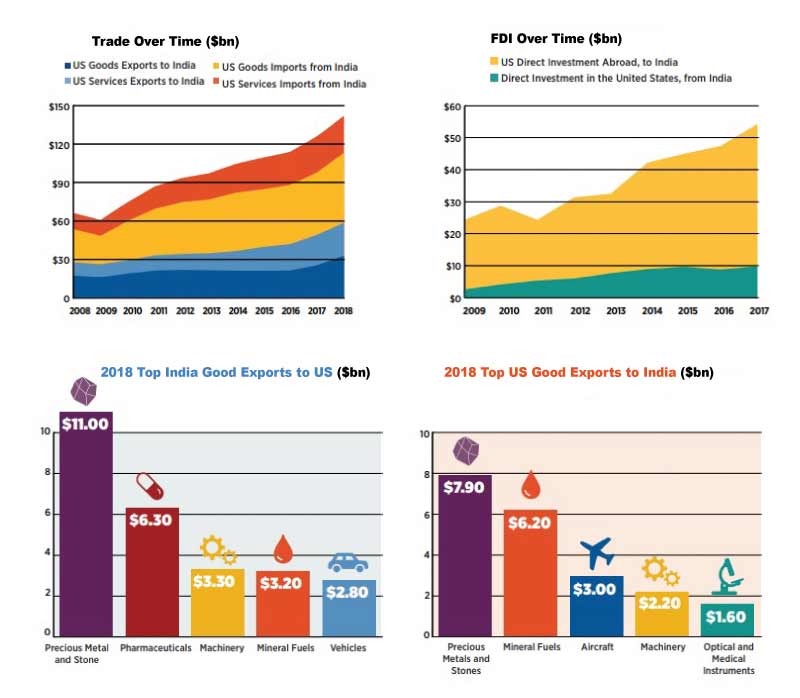- India
- Jul 17
‘India-US trade ties heading for a crisis’
India and the US need to “prioritise efforts” to manage current trade tensions and initiate cooperative projects in areas such as intellectual property rights and digital trade, according to a report by a former trade official from the Trump administration.
The report, ‘Trade at a Crossroads: A Vision for the US-India Trade Relationship’, said it was clear that the first priorities for the future should be to manage current challenges and address those that were likely immediately ahead.
Authored by Mark Linscott, former assistant, US Trade Representative for South and Central Asian Affairs, the report is produced jointly by the Atlantic Council and the US India Strategic and Partnership Forum (USISPF).
It provides an expert analysis of the current state of the relationship, including recent negotiations and recommendations for the path forward in the short, medium and long term.
Highlights of the report
The Indo-US trade relationship is rapidly approaching a point of crisis. Institutional arrangements are unable to address evolving and growing trade irritants, while protectionist instincts in both governments are exacerbating tensions.
Recent failures to reach even a small agreement, and subsequent tit-for-tat escalations, now place the relationship at a tipping point. Disputes have continued to escalate despite historic growth in bilateral trade and exchange of people.
The Indo-US relationship will be one of the most consequential of the 21st century, and commerce will play a vital role in determining whether it is constructive or adversarial.
Impasses span multiple industries, and indicate the presence of deeply rooted disagreements that necessitate dialogue to address. An examination of the institutional structures underpinning the relationship is required to move forward and salvage an otherwise promising partnership.
Key issues that contribute to current tensions
* Limited capacity of the Trade Policy Forum (TPF) to convene high-level officials and promote government-to-government engagement.
* A lack of authority for the commerce and industry ministry to negotiate and commit to solving bilateral problems.
* A lack of alternatives to bilateral negotiation and conflict management. The US and India have historically been at odds in the WTO, and the dispute-settlement process can be prohibitively slow.
* A lack of trust and rapport necessary for negotiating teams to pursue meaningful or long-term agreements. Trade negotiations outside the WTO with measurable outcomes generally involve free trade agreements (FTAs). The recent breakdown in negotiations over a small, limited agreement reinforces that a US-India FTA is out of reach in the immediate future.
While the history of bilateral trade negotiations has often been contentious, it also includes examples of constructive cooperation.
Recommendations to mitigate short-term disagreements
* The two governments should manage current conflicts and reach an initial agreement.
* Review and improve institutional underpinnings.
* Recommit to the TPF and pursue institutional reform.
* Replicate recent cooperative success.
* Explore opportunities for significant market opening agreements.
* Chart a map towards an FTA.
The publication of the report comes days after a US delegation of trade officials returned from New Delhi after holding talks with their Indian counterparts on resolving their trade differences.
The talks have started at the direction of Prime Minister Narendra Modi and President Donald Trump, who met in Japan last month on the sidelines of the G-20 Summit.
The US was the second-largest trading partner for India in goods in 2018, and the single largest export destination for Indian exporters.
Bilateral trade in goods and services grew at an average annual rate of 7.59 per cent from 2008 to 2018, double in value from $68.4 billion to $142.1 billion.


